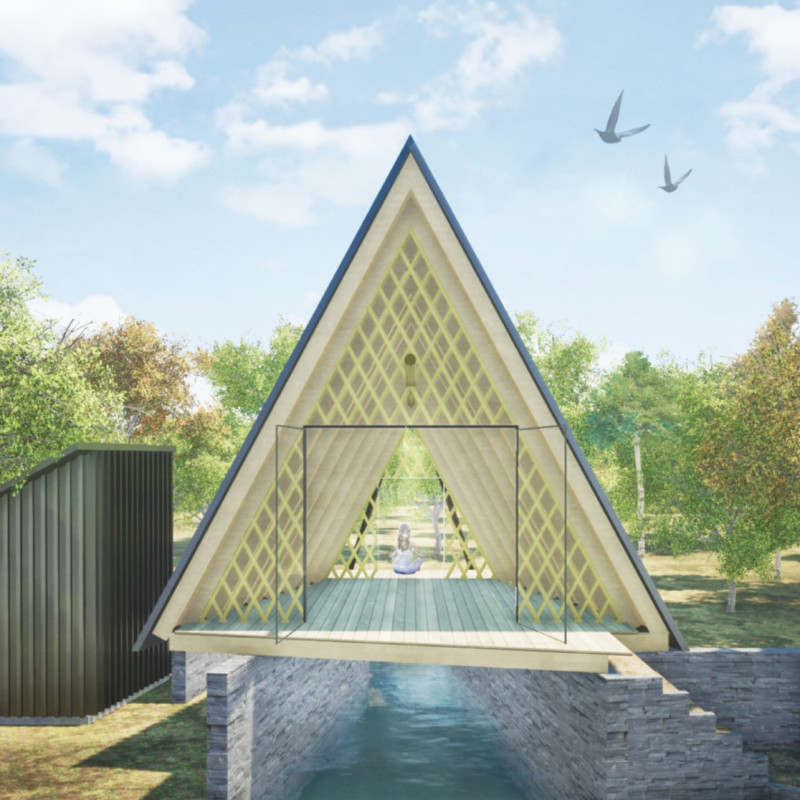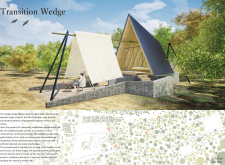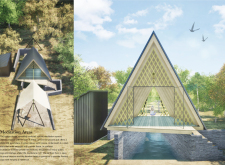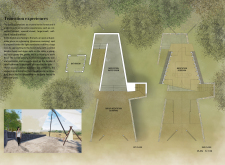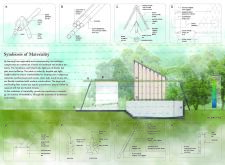5 key facts about this project
The Vine Retreat Hideout Huts are located in the forests of Cambodia, offering a peaceful place for meditation and wellness. These wedge-shaped structures are designed to strengthen the connection between people and their natural surroundings. The design draws from traditional Cambodian architecture, adapting its elements to meet the needs of modern living while creating a sense of harmony between indoor and outdoor spaces.
Architecture Concept
The layout of the Hideout Huts is carefully organized. It guides guests from shared communal areas into private, quieter spaces. This arrangement allows individuals to choose their experience of solitude amidst nature. Each hut contains designated areas for meditation, featuring elevated wood cabins set among greenery and shaded spots that provide calm retreats beneath the main structures.
Materials and Structure
Key materials play an important role in the design. Thatch is used in the membrane roof, giving a lightweight cover that reflects the qualities of traditional homes. The huts are capped with durable lightweight metal roofs, ensuring comfort while maintaining structural support. Bamboo beams and screens promote natural ventilation, while stone walls and wood terraces help unify the design with the environment.
Transitional Experience
The design emphasizes transitions as occupants move through spaces that feel both connected and isolated. The entry area offers a glamping option beneath a light membrane roof, creating an inviting experience upon arrival. A path leads into the forest, bordered by stone walls, guiding guests toward floating sleeping cabins that are elevated to avoid flooding.
Interior Design Elements
Inside the Hideout Huts, careful attention has been paid to details that enrich the user experience. Meditation spaces are thoughtfully arranged to promote reflection, with large openings providing views of the surrounding landscape. Earthen floors connect occupants to the earth, adding to a calming atmosphere. Floating yoga spaces are enhanced with hammocks, linking activities inside with the outdoor elements, thus encouraging a full engagement with nature.


